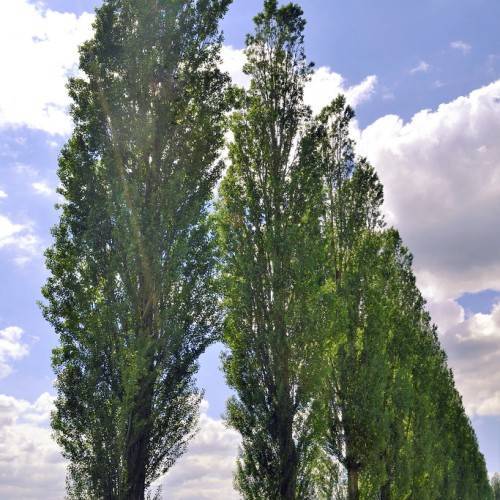
black poplar
Populus nigra 'Italica'
Cycle:
Perennial
Watering:
Average
Hardiness Zone:
3 - 9
Flowers:
Flowers In Spring
Sun:
Full sun
Soil:
Well-drained
Fruits:
Fruits Ready In Fall
Leaf:
Yes
Growth Rate:
Moderate
Maintenance:
Moderate
Drought Tolerant:
Yes
Care Level:
Medium
watering
The Black Poplar should typically receive approximately 1 inch of water per week, preferably in 1 deep watering. Water thoroughly when the surface of the soil is dry to the touch, making sure the water reaches all the way to the bottom of the root system. Do not allow the soil to become soggy as this can lead to root rot. During especially hot weather, you may need to water twice per week.
sunlight
Black poplar (Populus nigra 'Italica') is a deciduous tree that grows best in full or partial sunlight. It prefers to receive approximately 6-8 hours of direct sunlight daily, although it can tolerate some afternoon shade. It is also recommended to avoid direct sunlight during the hottest part of the day between 12-3pm to reduce the risk of sunburn and sunscald. When possible, this species should be planted in a location that avoids excessive reflected heat from nearby buildings, walls, or other surfaces.
pruning
Black Poplar (Populus nigra 'Italica') trees should be pruned in late winter or early spring. The goal when pruning is to maintain the overall shape of the tree and promote new growth without removing excessive amounts of the existing canopy. Pruning should be done to thin out, reduce, or remove dead, damaged, or diseased wood, branches that are rubbing or crossing, crossing roots, and low-hanging branches. Any branches that are too long should be cut back to an appropriate length. Additionally, it is important to remove any suckers or shoots originating from the rootstock or trunk, as those will lead to an abnormal growth pattern if left in place. Finally, any crossing or rubbing branches should be pruned back, as they can create infection and decay.
